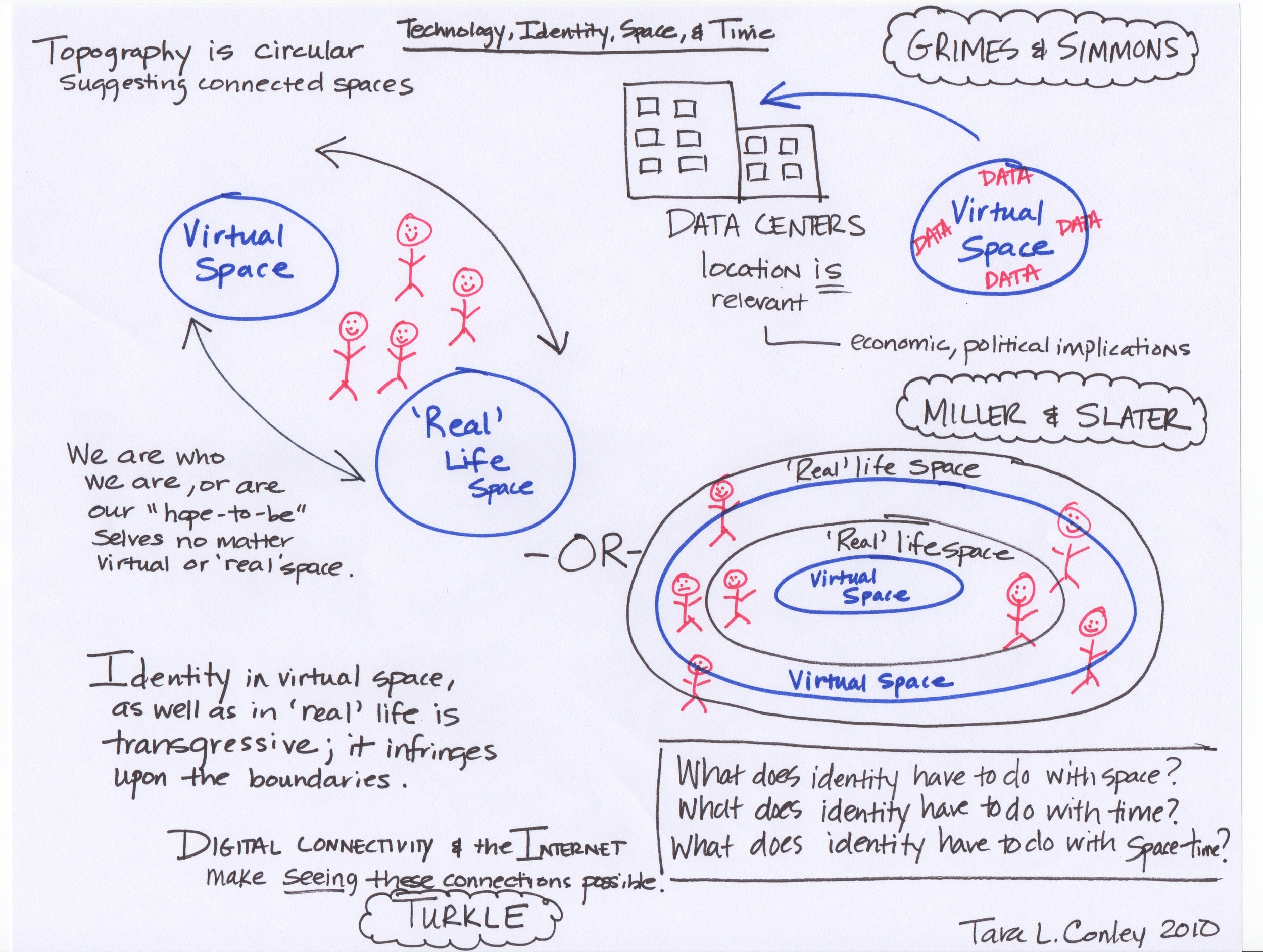So Many Questions: Technology, Identity, Space, and Time (MSTU 4020; Week 6)
Not to come across cheesy or hyperbolic, but I must say that I have been enthralled by the topics we've been discussing so far in class. I think it's mostly because I've always wondered about these topics ever since undergrad when I wrote my first paper on the linguistics practices in online chat rooms (circa 2000). Being surrounded with folks who not only share my interests in these topics but offer new ways of understanding and questioning what technology is and what our relationship is to technology has been an intellectual mind blow for me. Because of my experience in class so far, I think I'm well on my way to better articulating ideas that float abstractly in my brain. I've been exposed to other kinds of languaging and theorizing that I believe will help me make better sense of the abstract thoughts about technologies' relationship to identity, space, and time.
Looking back at previous blog posts and notes, I notice the following questions emerge:
- How do the way we use digital technology define us as a society and as individuals?
- Who or what owns the virtual space where we convene socially and intellectually?
- How are we producing knowledge via the Internet and digital connectivity?
- Who are we in 'real' space? Who are we in virtual space?
- How do our digital worlds see us?
- Why do we think there is a separation between who we are offline/digitally disconnected and who we are online/digitally connected?
I recently published an article on The Loop 21, "Who Are You in the Digital Age?" which asks similar questions about technology and identity.
The following themes continue to pop up in my head:
- Space
- Time
- Geography, topography of non-physical space
- Identity/place
I'm still mulling over the connections between digital connectivity, space, time, identity, even space-time, if there is such a connection. My brain was working overtime when I created the following flow chart/image collage (see below). I had to draw out my notes and questions to see where the connections might be.
Click to enlarge
In this diagram you'll notice some of the questions illustrated above, along with new questions such as:
- What is 'real'? What is virtual? Are these ideas separate or connected?
- What constitutes the boundaries between 'real' and virtual?
- Is virtual space constructed by data? Do we build it? Or do our identities build virtual space (I'm thinking of Miller and Slater's article specifically)?
I don't believe that we are dis-embeded or disembodied according to the geographical or spatial location. Though I learned from this week's readings that data (unlike the concept of identities in virtual space) can be located, collected, managed, and stored. It's not simply a random entity that's "out there somewhere" (see Grimes & Simmons article). BUT, looking at the chart I created above, there may be a spatial connection between our identities and data...Hmm.
With all of that said, one thing seems certain; that digital connectivity and the Internet makes seeing these connections possible (see Turkle article).
My thoughts and ideas about these topics are still very much a work in progress. I'm interested in hearing your thoughts about the connections between technology, identity, space, and time.
FYI - I'm currently reading Janna Levin's book How the Universe Got Its Spots: Diary of a Finite Time in a Finite Space. Dr. Levin is an astrophysicist and professor at Columbia University. So if you're wondering why my thoughts seem a bit spacey, that's why.
References:
Turkle, S. (1995). Life on the screen. New York: Touchstone. (Introduction: Identity in the Age of the Internet and Ch. 7: Aspects of the self. -
Miller, D., & Slater, D. (2000). Being Trini and representing Trinidad. In D. Miller & D. Slater (Eds.), The Internet: An ethnographic approach (85-115). Oxford: Berg. -
Jaeger, P. T., Grimes, J. M., & Simmons, S. N (2009, May). Where is the cloud? Geography, economics, environment, and jurisdiction in cloud computing. First Monday, 14,(5 – 4). URL: http://www.uic.edu/htbin/cgiwrap/bin/ojs/index.php/fm/rt/printerFriendly/2456/2171

